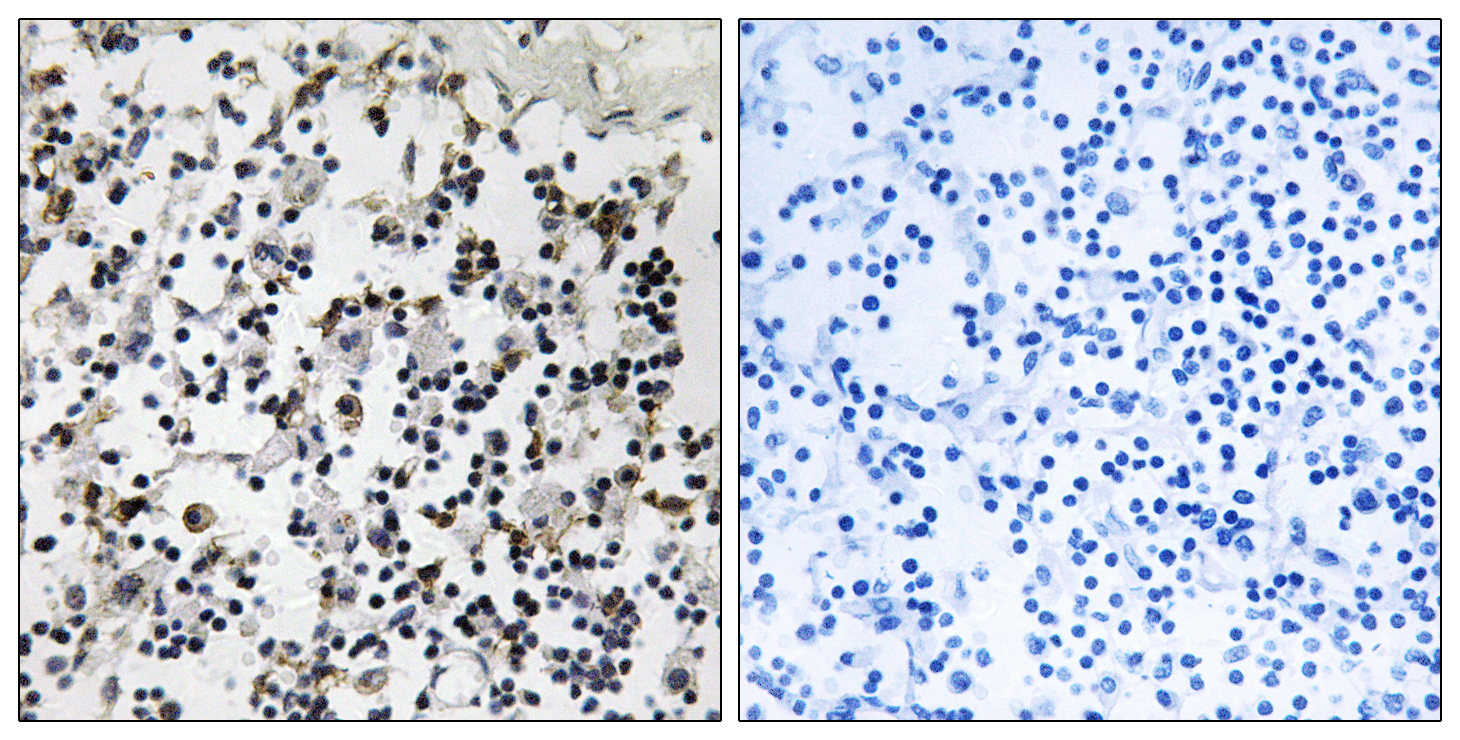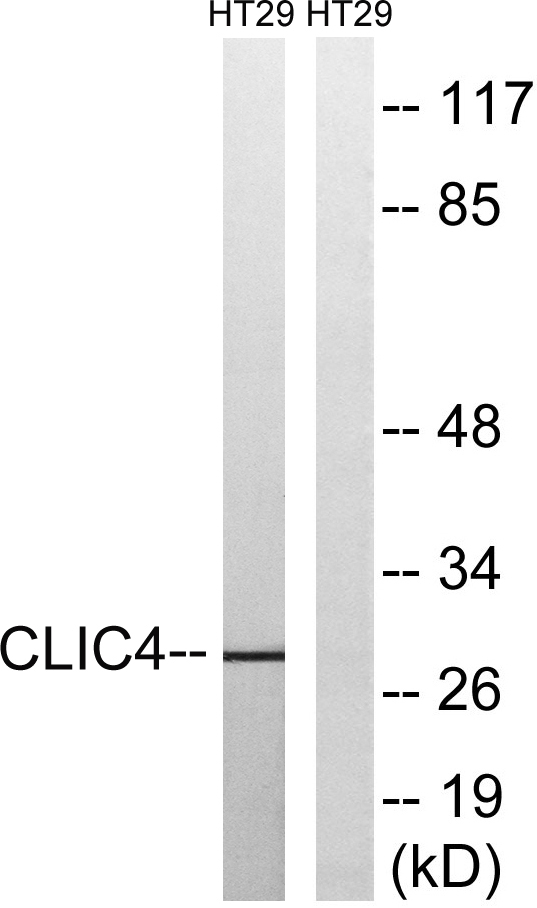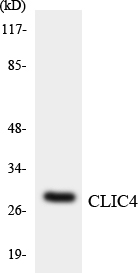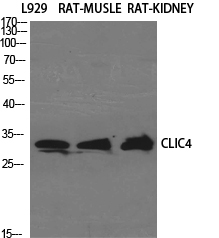产品名称
CLIC4 Rabbit Polyclonal Antibody
别名
CLIC4; Chloride intracellular channel protein 4; Intracellular chloride ion channel protein p64H1
蛋白名称
Chloride intracellular channel protein 4
存储缓冲液
Liquid in PBS containing 50% glycerol, 0.5% BSA and 0.02% New type preservative N.
Human Gene Link
http://www.ncbi.nlm.nih.gov/sites/entrez?db=gene&term=25932
Human Swissprot No.
Q9Y696
Human Swissprot Link
http://www.uniprot.org/uniprotkb/Q9Y696/entry
Mouse Gene Link
http://www.ncbi.nlm.nih.gov/sites/entrez?db=gene&term=29876
Mouse Swissprot No.
Q9QYB1
Mouse Swissprot Link
http://www.uniprot.org/uniprot/Q9QYB1
Rat Gene Link
http://www.ncbi.nlm.nih.gov/sites/entrez?db=gene&term=83718
Rat Swissprot Link
http://www.uniprot.org/uniprot/Q9Z0W7
免疫原
The antiserum was produced against synthesized peptide derived from human CLIC4. AA range:1-50
特异性
CLIC4 Polyclonal Antibody detects endogenous levels of CLIC4 protein.
稀释度
WB 1:500 - 1:2000. IHC 1:100 - 1:300. ELISA: 1:40000.. IF 1:50-200
宿主
Polyclonal, Rabbit,IgG
背景介绍
chloride intracellular channel 4(CLIC4) Homo sapiens Chloride channels are a diverse group of proteins that regulate fundamental cellular processes including stabilization of cell membrane potential, transepithelial transport, maintenance of intracellular pH, and regulation of cell volume. Chloride intracellular channel 4 (CLIC4) protein, encoded by the CLIC4 gene, is a member of the p64 family; the gene is expressed in many tissues and exhibits a intracellular vesicular pattern in Panc-1 cells (pancreatic cancer cells). [provided by RefSeq, Jul 2008],
组织表达
Detected in epithelial cells from colon, esophagus and kidney (at protein level). Expression is prominent in heart, kidney, placenta and skeletal muscle.
细胞定位
Cytoplasm, cytoskeleton, microtubule organizing center, centrosome. Cytoplasmic vesicle membrane ; Single-pass membrane protein . Nucleus matrix. Cell membrane ; Single-pass membrane protein . Mitochondrion. Cell junction. Colocalized with AKAP9 at the centrosome and midbody. Exists both as soluble cytoplasmic protein and as membrane protein with probably a single transmembrane domain. Present in an intracellular vesicular compartment that likely represent trans-Golgi network vesicles.
功能
domain:Members of this family may change from a globular, soluble state to a state where the N-terminal domain is inserted into the membrane and functions as chloride channel. A conformation change of the N-terminal domain is thought to expose hydrophobic surfaces that trigger membrane insertion.,function:Can insert into membranes and form poorly selective ion channels that may also transport chloride ions. Channel activity depends on the pH. Membrane insertion seems to be redox-regulated and may occur only under oxydizing conditions. Promotes cell-surface expression of HRH3. May play a role in angiogenesis.,induction:Up-regulated by calcium ions in differentiating keratinocytes.,similarity:Belongs to the chloride channel CLIC family.,similarity:Contains 1 GST C-terminal domain.,subcellular location:Exists both as soluble cytoplasmic protein and as membrane protein with probably a single transmembrane domain. Present in an intracellular vesicular compartment that likely represent trans-Golgi network vesicles.,subunit:Monomer. Interacts with HRH3.,tissue specificity:Detected in epithelial cells from colon, esophagus and kidney (at protein level). Expression is prominent in heart, placenta and skeletal muscle.,
纯化
The antibody was affinity-purified from rabbit antiserum by affinity-chromatography using epitope-specific immunogen.




.jpg)
